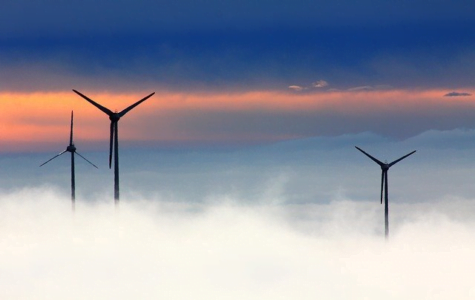World Energy Investment Report 2021
Context:
Recently, the International Energy Agency (IEA) published the World Energy Investment Report, 2021.

Key Highlights:
Energy Sector
In 2021, annual global energy investment is set to rise to USD 1.9 trillion, rebounding nearly 10% from 2020 and bringing the total volume of investment back towards pre-crisis levels.
Global energy demand is set to increase by 4.6% in 2021, more than offsetting the 4% contraction in 2020
Renewable Energy:
Electricity, led by buoyant spending on renewable power, continues to take the largest share of overall supply investment
- After staying flat in 2020, global power sector investment is set to increase by around 5% in 2021 to more than USD 820 billion.
- Renewables dominate investment in new power generation and are expected to account for 70% of 2021’s total of USD 530 billion spent on all new generation capacity.
- There will be substantial gain of renewable energy as the future energy outlook has been dependent on technological development, well-established supply chain and demand from consumers for carbon-neutral electricity.
Fossil Fuels:
Policies remain a crucial driver for many energy investments, with the impact of recovery plans becoming visible in some countries
- Spending on energy efficiency improvements is set to increase in 2021 by nearly 10% in response to renewed economic growth and initial effects of recovery programmes. However, against a backdrop of relatively low fuel prices, growth is heavily concentrated in markets and sectors with clear government policies, such as the buildings sector in Europe.
- Policies and stimulus spending are spurring projects in new areas such as low-carbon hydrogen and carbon capture utilisation and storage (CCUS).
- The increment of coal-fired power in 2020, mostly driven by China, is indicating that coal is down but not yet out.
- Increased Emissions:
- The above positive scenarios will still not deter the increase in carbon dioxide emission, after contraction in 2020 mainly due to economic slowdown induced by the novel coronavirus pandemic.
- Global emission is set to grow by 1.5 billion tonnes in 2021.
- Many developing nations’ supporting policy and regulatory frameworks are not yet aligned with long-term net-zero goals.
- Net zero emissions refers to achieving an overall balance between greenhouse gas emissions produced and greenhouse gas emissions taken out of the atmosphere.
- In many Emerging Market and Developing Economies (EMDEs), investment in renewables was hit harder by Covid-19 than in developed nations – and now many EMDEs have prioritised coal and oil in recovery plans.
- Reasons of Increased Emissions:
- The emerging market is almost 70% responsible for demand growth and India plays an important part in this block.
- China is showing a tremendous expansion in coal-based power production — their coal consumption in December 2020 was a historic high — though the country has a commendable renewable growth.
- The responsibility-share of developed nations should not be undermined. Their in-country growth of emission is moderate but their exported emission is of concern.
- Australia’s exported emission through coal is double its domestic emission.
- Although the US has shown renewed commitment to the multilateral United Nations system for tackling climate change by re-joining the Paris agreement. Its fascination with cheap shale gas is creating an investment distortion and adversely affecting the sustainability of developmental pathways of countries like India.
Source: IEA

